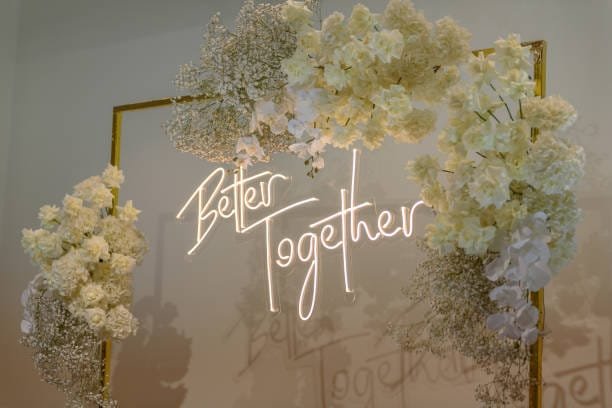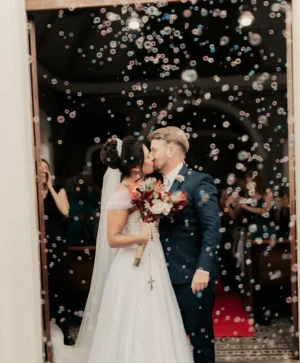Planning Your Overall Wedding Budget
Establishing a clear overall wedding budget is a crucial first step in planning a successful wedding.
It is important to determine the total wedding budget for your special day. The average cost of a wedding varies greatly. Begin by evaluating your finances, including savings and any existing debt. This analysis will provide a realistic view of what you can comfortably afford. Additionally, consider contributions from family members, which can potentially enhance your budget and allow for a more lavish celebration if desired.
Having a well-defined wedding budget: Having an established wedding budget serves as a guideline for all wedding-related expenses. This will make it easier to make informed choices throughout the planning process. It is beneficial to break down the budget into various categories:
Wedding Budget Items: Venue, catering, attire, decorations, and entertainment. Let’s look at typical wedding expenses. This will ensure that you do not overspend in one area at the expense of another. Each category should have a designated amount that reflects its importance to you as a couple, allowing flexibility where necessary while remaining within your overall financial limits. You will each have items that you do not mind spending a little more on.
Take time to research typical costs associated with weddings in your area. Factor in any seasonal variations that could impact pricing. Prioritizing must-have elements versus those that are nice to have will also help in making adjustments as needed. Remember that unexpected expenses may arise, so it is wise to allocate a portion of your budget for contingencies. This proactive approach not only enhances your wedding planning experience but also fosters a sense of financial security, allowing you and your partner to enjoy your engagement to the fullest.

Key Wedding Budget Items and Their Allocations
Understanding key wedding budget items is essential for proper allocation and prioritization. Below is a detailed list of common expenses, along with recommended percentages of the total budget to help you in your financial planning.
1. Venue Costs: Considered one of the most significant expenses, the venue typically takes up 30% of the total budget. This includes rental fees for the ceremony and reception sites, as well as related expenses such as decor and furniture rentals. You may be able to save a little here by having the ceremony and reception at the same location. This also makes it easier for your guests since they will not have to travel to a second location.

2. Catering: Another major expense, catering, should ideally account for about 25% of the budget. This encompasses food, beverages, and cake. You can explore various options such as buffet-style, plated dinners, or food stations to stay within your budget. Wedding venues often have packages with appetizers, dinner, and cake included. Read this blog on how to select the food and beverages for your wedding.

3. Photography and Videography: Capturing memories from the special day is vital. 10% of the budget should be dedicated to photography and videography services. This covers hiring professionals to ensure high-quality images and videos that last a lifetime. Price shop for this, as it can vary greatly.
4. Attire: This category, which includes wedding dresses, suits, and accessories for the couple and bridal party, should be allotted around 10% of the total budget. Customizations and alterations may also fall under this category. Consider renting or buying a wedding dress second-hand.
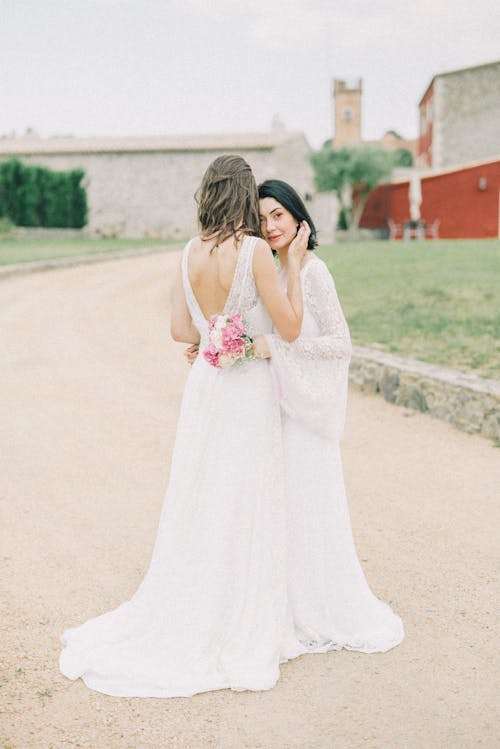
5. Entertainment: For music and entertainment options, whether a live band or DJ, an ideal allocation is about 5% of the wedding budget. Entertainment plays a crucial role in setting the atmosphere, so careful planning is essential. Read this blog on selecting your wedding theme.
6. Rings: Wedding rings generally require a budget of about 5%. You should consider your preferences and lifestyle when selecting rings, ensuring they fit comfortably within your overall budget.
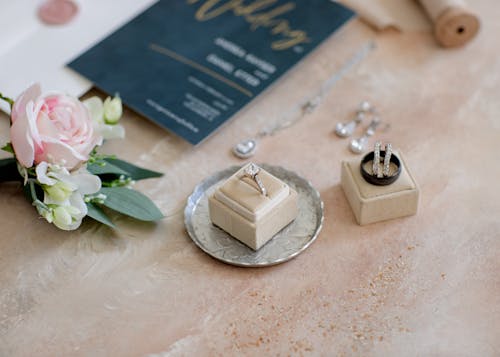
7. Flowers & Decor: Wedding flowers set the tone for the ceremony and the reception. Work with your florist and pick flowers that are in season to reduce costs. This also includes any special signs and place cards. This can be about 10% of the overall budget.
8. Transportation: Getting guests and the wedding party from place to place should be accounted for. 5% can be set aside for transportation.
9. Miscellaneous Expenses: Finally, it is important to set aside about 5% for miscellaneous costs, including invitations, and other wedding day essentials you may not realize you need until you get closer to the wedding date.
Asking the Right Questions for Wedding Budgeting Decisions
It is essential to ask the right questions that clarify priorities and guide expenditure decisions. One significant question you should consider is: “What are the most critical elements of our wedding?” This question helps both partners identify aspects they deem essential. Is it the venue, catering, or photography that can then be prioritized in the budget? Recognizing these priorities will facilitate more focused financial planning and prevent potential disagreements later in the process. This is key to planning a budget you can both agree on.
Another important question to consider is: “How can we incorporate personal elements into our wedding while respecting traditional practices?” This question fosters a balance between individual preferences and family expectations. You should discuss how you can blend your unique personalities into the wedding while also honoring traditions that carry significance for your families. This is essential for making thoughtful decisions that are important to both of you and your respective families.
Additionally, you should consider potential budget overruns by asking: “What is our plan for unexpected expenses?” Weddings can often exceed initial expectations, making it important to create a buffer within the budget. You may want to decide on a percentage of the overall budget to allocate for unforeseen costs, thereby reducing anxiety and ensuring flexibility when faced with surprises. Open communication about financial expectations and compromises will create a team-oriented approach to budgeting. This will ensure that both partners are fully committed to the financial plan.
Visualizing Your Wedding Budget with Charts and Photos
It is essential to maintain an organized approach to your budget. Utilizing visual tools such as charts and photos can significantly enhance your ability to understand and manage your wedding expenses. The integration of these visual aids allows you to allocate your budget effectively, ensuring that every critical aspect of the wedding is accounted for and visually represented.
One effective method for visualizing your wedding budget is with pie charts or bar graphs. By categorizing expenses—such as venue, catering, attire, and entertainment—you can see at a glance how funds are distributed across different components of the wedding. For instance, a pie chart can vividly illustrate what percentage of the total budget is allotted to each area, facilitating easier adjustments as needed. As the planning progresses, updating these visuals can provide insightful feedback on where changes may be necessary, whether that is to scale back or invest more in a particular category.
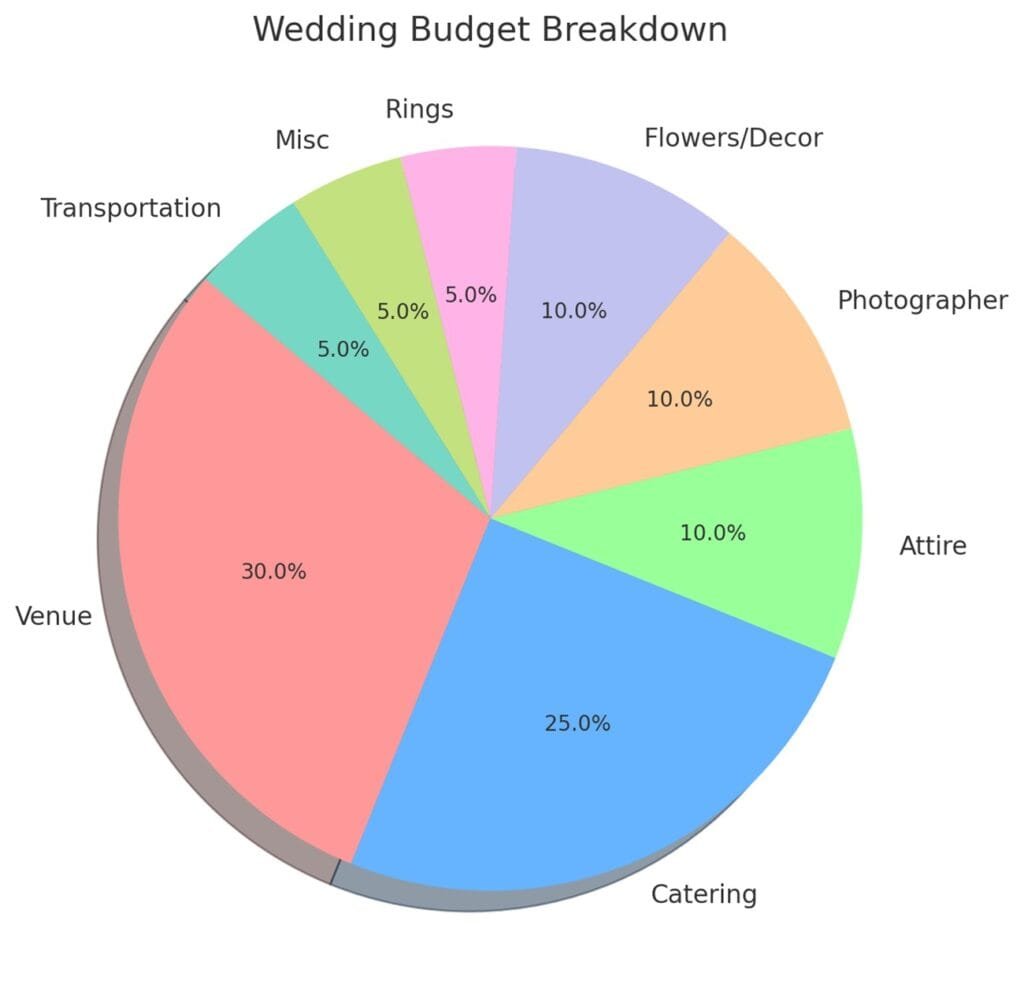
Moreover, incorporating photographs into the planning process can serve as a valuable motivator and reference point. Pairing images of selected venues, floral arrangements, or decor elements with their corresponding price tags allows you to solidify your vision for the day. These visuals can help reinforce the decisions made throughout the planning process, ensuring that each element aligns with your overall aesthetic and budgetary constraints.
In summary, combining charts with images not only enhances the clarity of the wedding budget but also contributes to a more enjoyable planning experience. By fostering a clear focus on financial limitations coupled with visual inspiration, you can navigate the complexities of wedding planning with greater confidence and creativity. This approach ultimately helps maintain a balanced view of financial health throughout this significant journey.
How to Create a Wedding Budget: Wedding Budgeting Tips, Advice That Works
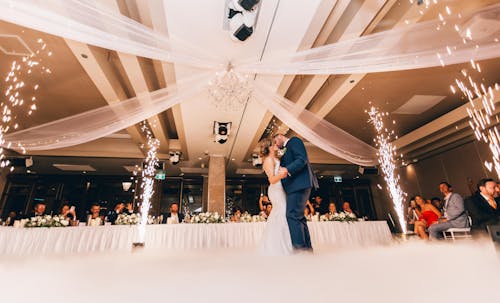
Follow me on Pinterest for more wedding ideas.

